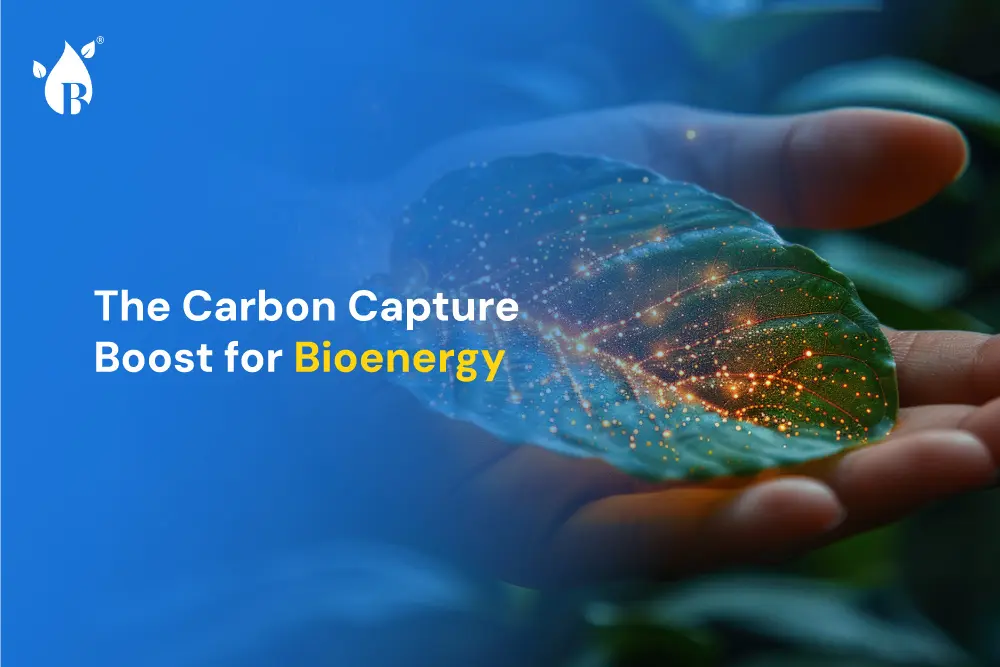
As India accelerates its journey toward a sustainable future, carbon capture technology is poised to play a pivotal role in transforming the country’s bioenergy sector. Bioenergy, derived from organic materials like agricultural waste, is already a key player in India’s renewable energy landscape. However, when combined with carbon capture technology, it becomes a game-changer in the fight against climate change.
Bioenergy with Carbon Capture and Storage (BECCS): A Transformative Approach
Bioenergy with Carbon Capture and Storage (BECCS) is an innovative approach that captures carbon dioxide (CO2) produced during bioenergy production and stores it underground, preventing it from entering the atmosphere. This process not only neutralizes emissions but can also create “negative emissions,” effectively removing CO2 from the environment.
In the Indian context, where agricultural waste is abundant, BECCS offers a dual benefit. It provides a sustainable solution to waste management and contributes to India’s climate goals by reducing greenhouse gas emissions. As the country aims for net-zero emissions by 2070, BECCS could become a cornerstone of its carbon reduction strategy.
Potential Impact on India’s Renewable Energy Goals
India has set ambitious targets for renewable energy, aiming to achieve 500 GW of non-fossil fuel-based energy capacity by 2030. Bioenergy is expected to play a significant role in this transition, with NITI Aayog projecting that it could contribute to 5-10% of India’s primary energy supply by 2030.
When BECCS is integrated into this framework, the potential impact is profound. BECCS could capture millions of tons of CO2 annually, significantly reducing the carbon footprint of India’s energy sector. This not only aligns with India’s commitments under the Paris Agreement but also positions the country as a leader in climate action.
Driving Innovation and Investment
The adoption of BECCS in India will require substantial investment in technology, infrastructure, and research. However, the long-term benefits outweigh the initial costs. By investing in BECCS, India can create a new industry focused on carbon capture and storage, driving job creation, technological innovation, and economic growth.
Moreover, international collaboration and funding could accelerate the deployment of BECCS in India. Global partnerships with countries that have already implemented carbon capture technology can provide valuable insights and support, enabling India to leapfrog into a more sustainable energy future.
Challenges and the Path Forward
While the potential of BECCS in India is immense, several challenges need to be addressed. These include the high costs associated with carbon capture technology, the need for regulatory frameworks, and the development of infrastructure for CO2 storage.
To overcome these challenges, a concerted effort from the government, industry, and research institutions is essential. Public-private partnerships can play a crucial role in mobilizing resources and expertise, while government policies and incentives can create a favorable environment for BECCS adoption.
Conclusion: A Vision for a Sustainable India
As India pursues its vision of becoming a global leader in renewable energy, carbon capture technology, particularly BECCS, offers a unique opportunity to enhance the sustainability of its bioenergy sector. By turning agricultural waste into energy while simultaneously capturing and storing carbon, India can make significant strides toward its net-zero goals.
The integration of BECCS into India’s energy landscape is not just a technological advancement; it’s a strategic move toward a cleaner, greener future. With the right investments, policies, and collaborations, BECCS can become a driving force in India’s energy transition, helping the nation turn its carbon-intensive past into a sustainable, carbon-negative future.



